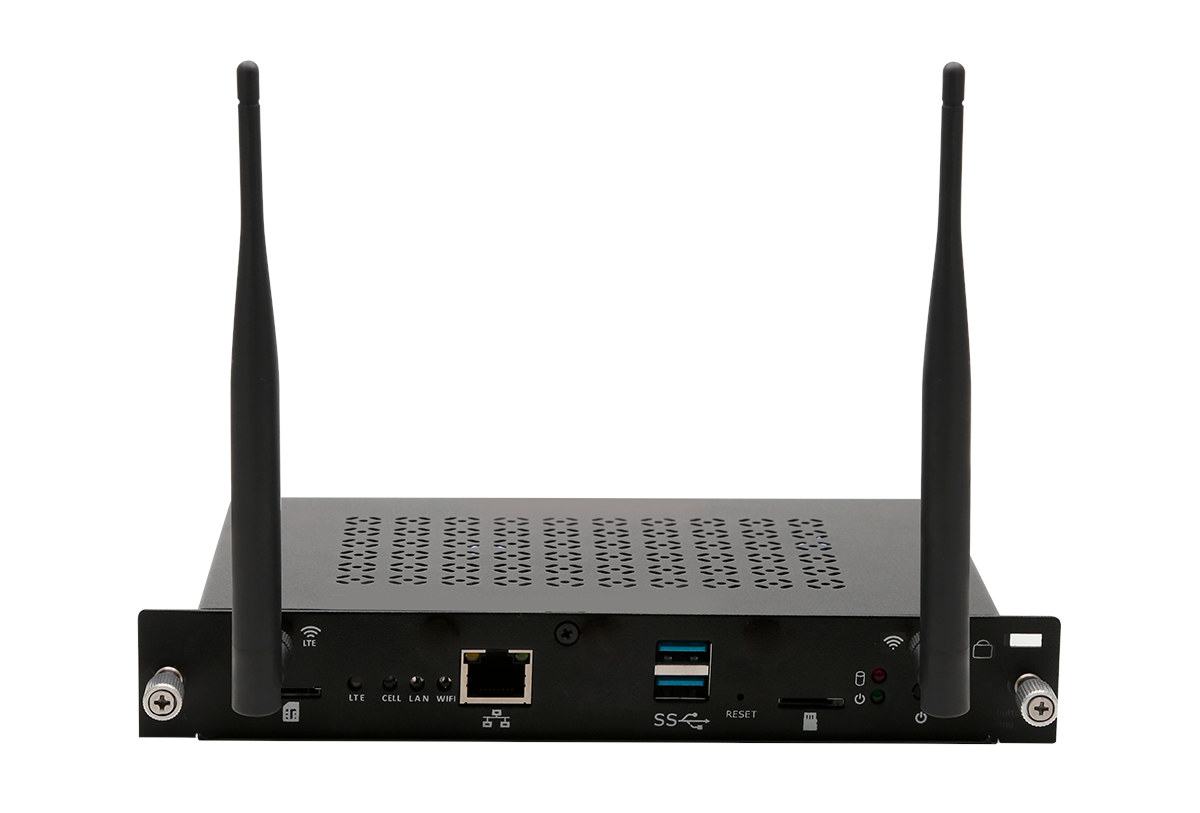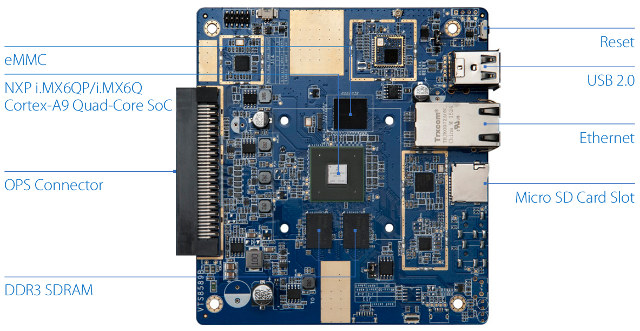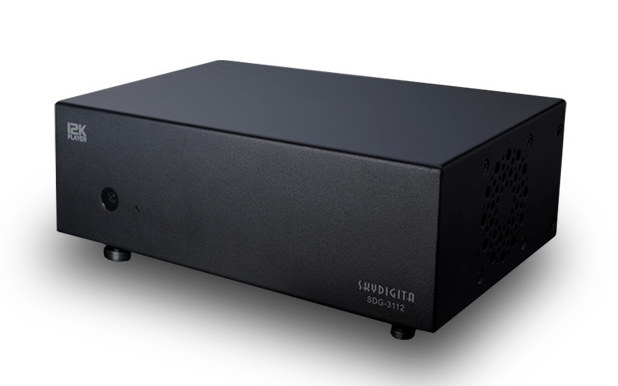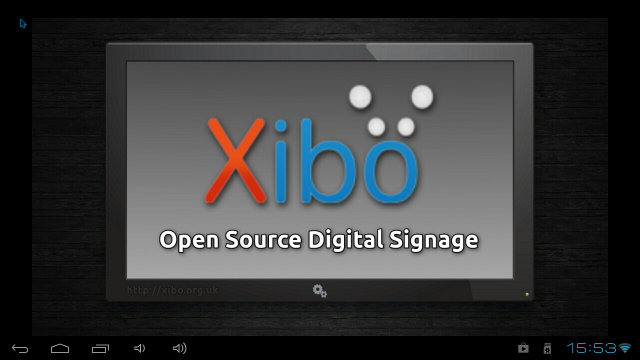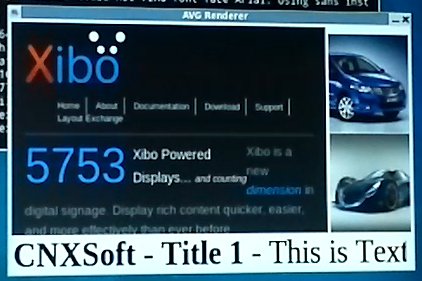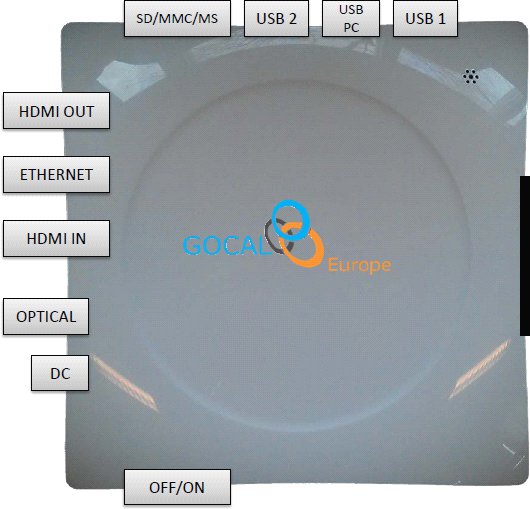DataMax DM29 is a digital signage player and mini PC compliant with the OPS (Open Pluggable Specification) standard and powered by an Amlogic S905X3 quad-core Cortex-A55 processor coupled with 4GB RAM and 32GB internal storage. The Android 9 system also features an HDMI 2.1 port capable of up to 4Kp60 video output, Gigabit Ethernet, dual-band WiFi, and 3G or 4G LTE cellular connectivity, as well as a pair of USB 3.0 ports. The system can be powered from an OPS-compliant display or via PoE. DataMax DM29 specifications: SoC – Amlogic S905X3 quad-core Arm Cortex-A55 processor @ up to 1.9 GHz with Arm Mali-G31 MP2 GPU supporting OpenGL ES 3.2, Vulkan 1.0, OpenCL 2.0 System Memory – 4GB dual-channel LPDDR4 or DDR3 Storage – 32GB eMMC flash, microSD card socket, M.2 SSD socket Video & audio output – HDMI 2.1 up to 1080p120 or 4Kp60 Video Decoding – 10-bit H.265, VP9, […]
ZidooLab OPS Android Digital Signage Players are Powered by Rockchip RK3368 or Realtek RTD1295 SoC
Zidoo is known for their Arm based Android TV boxes targeting the consumer market, but the company also runs ZidooLab for the B2B market, and especially digital signage application, which may explain why they release a digital signage SDK a while ago. The company can customize hardware and software for their customer’s needs, but what caught my intention is that they have Arm based digital signage players that comply with OPS (Open Pluggable Specification) that was first released by Intel in 2010, and defines electrical, mechanical and thermal specifications of OPS compliant devices which are meant to be plugged into compliant monitors. ZidooLab has currently two Android OPS hosts: A1 & A2 that share most of the same specifications, except for the processor, and some I/Os: SoC A1 – Rockchip RK3368 octa-core Cortex A53 processor up to 1.5 GHz, PowerVR G6110 GPU A2 – Realtek RTD1295 quad core Cortex A53 […]
VIA VTS-8589 OPS Board Powered by NXP i.MX 6 ARM Processor Complies with Intel’s OPS Digital Signage Specifications
Intel introduced the Open Pluggable Specifications (OPS) defining mechanical and electrical requirements for boards used in digital signage back in 2010. Since then there has been a few Intel OPS boards launched on the market, and the company introduced OPS+ specifications with support for simultaneous display and broadcast usages, 8K resolution displays, and the ability to drive three individual 4K resolution display outputs. VIA has now launched VTS-8589 OPS board compliant with the older specifications, and featuring NXP i.MX6 quad core ARM Cortex A9 processor combined with 2GB RAM, 8GB flash, and more. VIA VTS-8589 OPS has two version of the board with the following specifications: SoC VTS-8589-QP model – NXP i.MX 6QuadPlus quad ARM Cortex-A9 processor @ 1.0 GHz with Vivante GC2000+ GPU supporting OpenGL ES 3.0, OpenCL and OpenVG 1.1, 512KB embedded SRAM VTS-8589 model – NXP i.MX 6Quad quad ARM Cortex-A9 processor @ 1.0 GHz with Vivante GC2000 […]
Zidoo 12K Video Player Plays…12K Videos (on 3 Synchronized 4K UHD TV)
Zidoo Android TV boxes have often been featured in this blog, but the company also has products for the industrial market such as their 4K streaming player outputting the same video to up to 8 monitors, and a “12K video player” that outputs a video to three monitors @ 3840×2160 resolution. Zidoo strength is software and support, and they are not a hardware company, and while so far they have partnered with Kaiboer for their Android media players, if the picture above is any indication, they are using Skydigita SDG-3112 player as the hardware platform. The list of specifications and features currently released are unfortunately quite sparse: Video Playback Single 12K video outputted to three 3840×2160 monitors @ 30Hz max, 1080p also supported Codecs – H.265 and H.264 decoding. Containers – TS, MKV, AVI, VOB, MPG, MPEG, MOV. Iimage formats – JPG, JPEG, GIF, PCX, PNG. Video Output – 3x […]
Xibo for Android on Mele A1000 Set-top Box & WM8850-MID Tablet
Earlier this month, Xibo developers announced the beta version Xibo for Android was available for testing. Contrary to the Linux & Windows clients and servers which are open source, Xibo for Android is developed by Spring Signage and will available commercially. This sponsorship will help finance the development of Xibo open source software: the 2 clients (.net in Windows, Python in Linux), the server and API. The current beta version supports the most important features of the Windows client, but lacks support for Adobe Flash, Microsoft PowerPoint, Datasets, Microblog, Stats, Counter Media, Socket Listener, Lift/Serial Interface Support, Offline Update via USB Drive, Full Compositing (overlapping regions) and Video Transparency. If you want to test the Xibo client for android, you can register for the private BETA and download an APK (Xibo_Android_Clientv1.0.12.apk) to install on your Android devices. Being part of the BETA program will also guarantee you a price of […]
Xibo Digital Signage Running on Mele A1000 AllWinner A10 Set-Top Box
Those following my blog know that I recently bought a Mele A1000 to play around. For those who are not familiar with this device, the Mele A1000 is a $70 Android set-top box featuring an AllWinner A10 cortex A8 processor and lots of peripherals, and it can easily be hacked to run a Linux distributions. This hardware would also be a great digital signage player thanks to its video playback capabilities: up to 2160p video decoding and 1080p video output. Last year, I ported Xibo, an open source digital signage player, to ARM and ran it in the Beagleboard emulator (qemu), but I hadn’t had the opportunity to try it out in a real hardware. I’ve tried this rootfs based on Linaro ARM Linux Internet Platform (ALIP) image for BeagleBoard in the Mele A1000, by following an adaptation of the method I provided earlier. For this demo, I created a […]
Gocal Europe Android Digital Signage Players Based on AMLogic AML8726
Gocal Europe is a dutch company with offices in Shenzhen and Hong Kong providing OEM/ODM high tech solutions such as digital signage and Android TV solutions including players as well as software solutions via HelloTV. The company has 2 digital signage players running Android 4.0 (ICS): UFO-TV This player is based on AMLogic AML8726M3 and features 1GB RAM, 4GB flash, HDMI IN and HMDI OUT. Here are the device specifications: CPU – AMLogic AM8726 M3 (ARM Cortex A9) @ 1GHz with Mali-400 GPU System Memory – 1 GB Flash – 4 GB Video Container Formats – avi, mpeg, vob,mkv, ts, m2ts, wmv and rm Video Codecs – MPEG1, MPEG2, MPEG4, MPEG2-HD and VC-1. Audio Formats – MP3, WMA, WAV, MIDI, OGG, AC3, DTS, ACC and APE External Storage – SD, SDHC and MMC cards. USB – 2x USB 2.0 Host ports Connectivity – Ethernet 10/100 Mbps, WiFi and Bluetooth Video […]
Xibo Digital Signage in Raspberry Pi Emulator (Step 1)
Xibo (pronounced eX-E-bO) is an open source, multi-display, multi-zone, fully scheduled digital signage client/server solution written in Python and dotNET. If you are not familiar with Xibo you can visit http://xibo.org.uk/ or/and read my introduction XIBO: An Open Source Digital Signage Server/Client. The Raspberry Pi is a low cost board based on Broadcom BCM2835 (ARM1176 Core) that should be available for sale at the end of January / beginning of February at http://www.raspberrypi.com. There are two versions of the board: Model A: 128 MB RAM and no Ethernet Model B: 256 MB RAM with 10/100 Mbit Ethernet BCM 2835 also features a Videocore GPU supporting OpenGL and 1080p30 video decoding that makes it ideal for multimedia applications such as digital signage players. The board support both HDMI and composite video output. You should also be able to connect a LCD via the DSI interface. If we can make Xibo run […]


